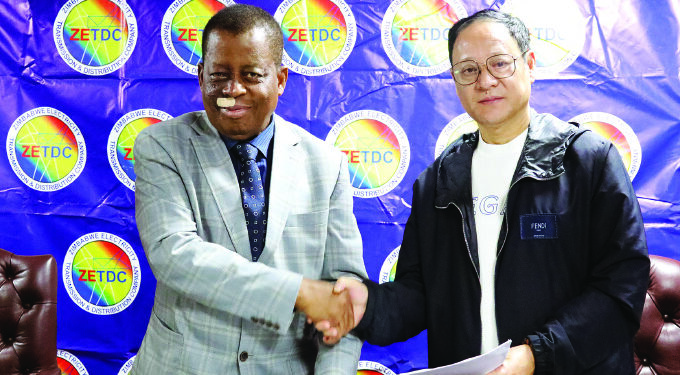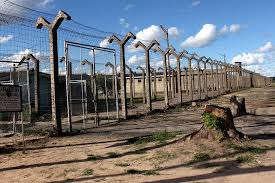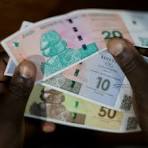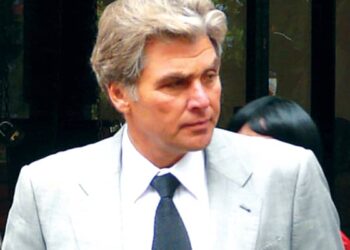Zesa Holdings and Dinson Holdings which is developing the iron and steel plant at Manhize near Mvuma yesterday signed a tariff agreement that will see the power utility supplying subsidised electricity in return for the construction of three renewable energy plants by the iron and steel company.
The tariff agreement was signed by Zesa executive chairman, Dr Sydney Gata and Dinson’s chairman Mr Chen Shangsong.
The three plants are expected to provide 270MW, which will primarily be used at the US$1,5 billion iron and steel plant set to be commissioned in January.
Dinson is constructing a 100 MW solar plant at its ferrochrome smelting plant in Selous, another 100 MW at Manhize powered by wind energy and a 70 MW to be produced from heat generated at the iron and steel plant.
Dr Gata yesterday said the signing of the agreement was a major milestone to the development of the electricity sector and other related sectors.
“Today (yesterday), we are signing an agreement they call the tariff agreement, but its more than that because this agreement will ensure that power would be supplied to the ferrochrome sector of their investment at a sustainable tariff, it is a subsidised tariff because everywhere in the world ferrochrome industry energy costs are subsidised.
“Zesa has deployed some ingenuity that will put an end to the subsidy by causing the ferrochrome industry to invest in their own PV solar plant which will be deployed to supply them with cheaper power, cleaner power supplemented by Kariba in terms of when the intensity of the sun is not there or at night,” Dr Gata said.
He added that through the agreement, Dinson would eventually be less reliant on power from the national grid.
“The impact of that is as follows; first and foremost, we wean off the subsidy baby, a very big one because all together (Dinson operations in the country) they consume almost 400 MW and as Zesa we cannot go on subsidising 400 MW so, with this project they will be able to stand on their own within 18 months or less. Number two, while they are using the sun during the day, we can conserve water at Lake Kariba and shut down some of the hydro-turbines and open them at night when the sun is no longer available to provide the power they need,” he said.
He said by transitioning to green energy, Dinson will be relevant to the economy as the world is going towards discriminating against products and processes that have a carbon foot print like coal energy.
The Tsingshan Group which is the parent company of Dinson, accounts for more than 25 percent of the production of stainless steel in the world and Dr Gata said their investments in Zimbabwe which also include a coking coal plant in Hwange, would have a significant impact on the country’s economy.
“They are now anchored in a major game-changer for our economy and national welfare that is investment in the steel industry (at Manhize), this company is going to produce their best and cheapest steel on the continent of Africa in Zimbabwe.
“As Zimbabwe and Zesa, we are deeply privileged to be associated with that project and the company that is driving it. We signed an agreement a few weeks ago between our subsidiary, Zesa Enterprises and the Dinson company here in Zimbabwe and in terms of that agreement we are partners not only in supplying each other energy but also in fabricating steel,” he said.
Dr Gata said when the projects they had agreed on with Dinson were completed Zimbabwe, would have the strongest electricity industry in Africa as it would be producing all the required hardware locally.
Dinson managing director Mr Benson Xu said Mr Chen was in the country to check the progress at Manhize, which is expected to be commissioned in February next year, and other projects they are involved in.
“We see the cooperation between Dinson and Zesa as more of cooperation between the private sector and State-owned company so its very important that we set a good example to other investors,” Mr Xu said.
He added that significant progress had been made on the construction of the solar power plant.
“This agreement is more than the tariff, there is a lot of commitment already, we have made a lot of efforts to make sure that the solar project takes place.
“I want to emphasise that from the first quarter of next year, we are going to put the 100 MW solar farm at Afrochine in Selous and there is firm commitment for that and a lot of progress because of support from Zesa and other stakeholders. We are going to deploy the first wind energy farm at Manhize during the course of next year,” he added.
Mr Xu said the 70 MW power plant would be completed in January together with the iron and steel plant.
“So, by working with Zesa, we can achieve more not only benefitting Zesa and Dinson, but the people of Zimbabwe and we want to take the relationship further,” he said.
Of the total workforce that Dinson Group will have in Zimbabwe, 5 000 people will be employed directly at the Manhize steel plant, while up to 20 000 will be economically involved in upstream, midstream and downstream activities.
Further, developments around the steel plant will see the establishment of a new mineral value-addition industrial park and a town.
A railway line linking Manhize and Mutare up to Beira in Mozambique will also be constructed for easier transportation of bulk goods.










